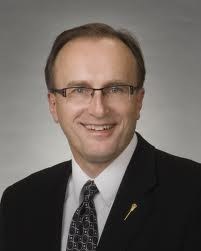Saskatchewan's Highways and Infrastructure Minster Jim Reiter issued a response to the Time to Twin committee and the general public in southeast Saskatchewan this past week following the Oct. 12 article that appeared in The Mercury regarding the prospects of twinning Highway 39 and Highway 6 south of Regina.
The article indicated that the local committee members, who attended a meeting with Reiter and Estevan MLA Doreen Eagles, came away discouraged and disappointed and were voicing concerns regarding the future of this main link from the U.S. border to Regina and beyond.
"They stated they were disappointed and discouraged and I'm saying I am disappointed and a little confused about their reaction since I tried to impress on them that no decisions had been made or will be made in the immediate future regarding the twinning of this highway or the installation of passing lanes.
"We did discuss passing lanes and I questioned them regarding their insistence that passing lanes wouldn't work in reducing accident rates," Reiter said during the phone conversation.
"But I never said no twinning. We talked about making the highway safe. What I said is that the issue needed to be evaluated and several kilometres of passing lanes can be installed for about 15 per cent of the cost of twinning. When it costs about $1.2 million to build one kilometre of highway, it mounts up quickly. Ministry engineers say they can get more passing lanes down, reduce accidents by about 25 per cent, while twinning will reduce accidents by about 35 per cent," Reiter said.
As for his comment regarding him not being pressured by the public, or the committee going to the media, Reiter said he was simply saying that "this issue isn't about politics, it's about safety."
Reiter also wondered about the statement regarding visitations by the American lobbying group, the Theodore Roosevelt Expressway Committee, that is pressing for a twinned highway south of Regina as far as Regway where it would hook up with Interstate Highway No. 2 in the U.S.
Reiter said his officials had held a few short meetings with this group, but the claim that his ministry people held a three-day conference with them wasn't true. "I don't know where that came from. They may have held other meetings with area transportation committees and may have visited another ministry or two, but the people in our ministry, including the deputy minister, said there had been no three-day conference with them, only a few short meetings."
Reiter said the Time to Twin committee understood clearly that although a good portion of provincial revenue comes from southeast Saskatchewan, that doesn't mean it automatically receives preference. "The potash industry brings in massive revenues too. Would that mean we'd have to give preference to those areas where potash is mined?"
Reiter went on to explain that Highways and Infrastructure has claimed a bigger budget than what would normally be granted during the past few years because it was acknowledged by the government that there was a lot of catching up to do in terms of restoration and rebuilding a lot of the province's main throughways. They then spent $66 million more in resurrecting highways and bridges following this past spring and summer's flood events and that was money that had not been included in their budget at the start of the year.
"Our five-year capital plan, which is constantly evolving, is still in place. We said before that once the Saskatoon to Prince Albert twinning project is complete, we'll turn our attention to other major needs. This is the last year for that project and we have some huge priority items, and of course we have competing interests at the table when each of the ministries gets around to choosing how to spend the taxpayers' money. We've said it before, 'there are good projects and then there are other good projects' so the importance of addressing needs in other categories is always in the forefront. I can say though, that we can stand on our record as far as getting good things done in the past. A lot of highway work has been done and there is a lot more to do," Reiter said.
"We're referring to a growth agenda for highways. There is more traffic, more need for new roads, plus the need to repair a lot of highways that had been left neglected for too long. We inherited a massive problem here when we first formed government and finally we have an adequate budget to address some of it, but it takes time."
Reiter said he felt Saskatchewan's regulations regarding size and weight restrictions for large commercial carriers was fair, but it could be debated as to whether the weights were too liberal. He pointed out however, "the trucks are on the highways for good reasons. We have an export-based economy and it has to be moved."
Reiter assured the public that if the they decided to re-elect the current government, the Highways and Infrastructure five-year plan would remain transparent and decisions would be made on fact-based criteria.




